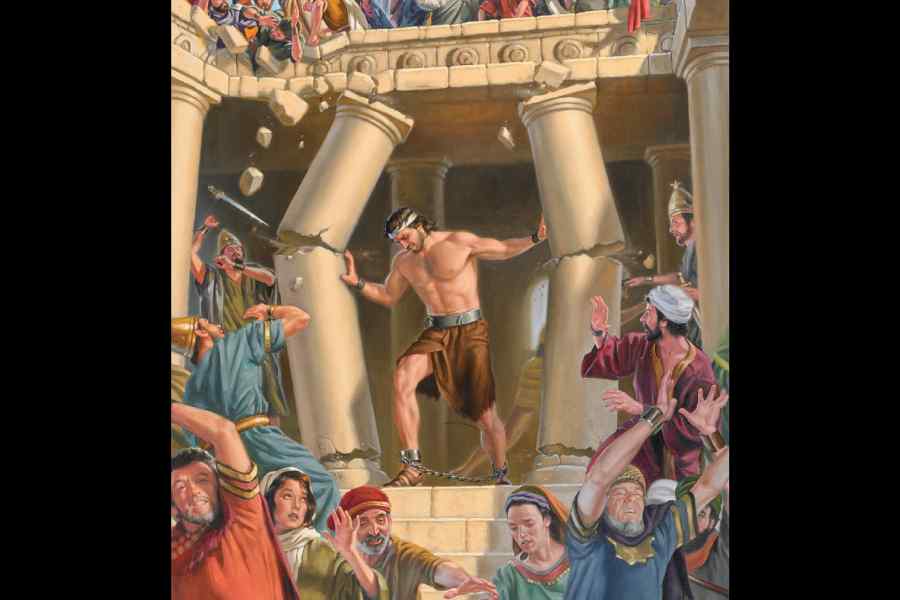When I think of the hostages being led blindfolded into the web of underground tunnels in Gaza — Israelis call these tunnels ‘the metro’ with a dash of sarcasm — I am reminded of the biblical story of Samson, a Nazarite, being led into the dungeons of Gaza. Milton’s Samson Agonistes depicts Samson, the once-mighty combatant, as blinded and a prisoner of the Philistines, “Eyeless in Gaza at the Mill with slaves”. His blindness symbolises recklessness towards reason that led him to act hastily. Milton uses the biblical myth to explore the tension between wartime and pacifism in a creative way.
Apparently, the conflict between the Israelites and the Philistines goes back to 1200 BC when Samson was born in the Canaan region. Given the Philistine animosity towards Israelites, god, the story goes, created Samson to avenge the torture of Jews. The Philistines, in turn, accused Samson of committing two crimes: he ruined their land and caused many deaths. The plundering of the Philistine land in the Bible resonates with the modern-day Israeli plunder of the West Bank and Gaza. Such acts of violence remain thematically important to Samson Agonistes.
One can fall back on the past — real and imagined — to grasp its continuity in terms of aggression in the Middle East. That is perhaps the reason why myth and poetry continue to tell us the story of this ancient war. The impact of the horror is profoundly moving, both in Milton’s poem and in Gaza’s annihilation in reality. A striking connection in my mind is the parallels between the images of the death of the eyeless Samson and thousands of Philistines and the bodies of civilians covered in white shrouds in Gaza today. The more I think of it, the more I am convinced about the public indifference towards human rights as well as the wrongful conflation of all Palestinians with the Hamas. Merciless attacks on an entire population have been carried out even though these acts of violence are disproportionate to the original transgression that triggered the retaliation. The disproportionate nature of the Israeli retaliation seems to have escaped the attention of the global citizens.
War, indeed, can never settle differences. It can only portend a dark future. The tension between belligerence and pacifism has existed throughout history. This is demonstrated by the fact that although the Palestinian right to a homeland has not been overlooked by the Western powers, they, in cahoots with Israel, use military power to try and displace Palestinians through a repeat of the Nakba.
The continuum of warfare in past and present, in myth, verse, and reality, underlines its centrality to the region’s politics and religion. Both the biblical story of Samson and the cauldron that is present-day Middle East have complex architectures. But a resolution is unlikely to be found in terms of military firepower or predatory economics. A realistic political response and diplomatic negotiations brought about by interlocutors conscious of world peace and human rights can help find a way out of the crisis.










